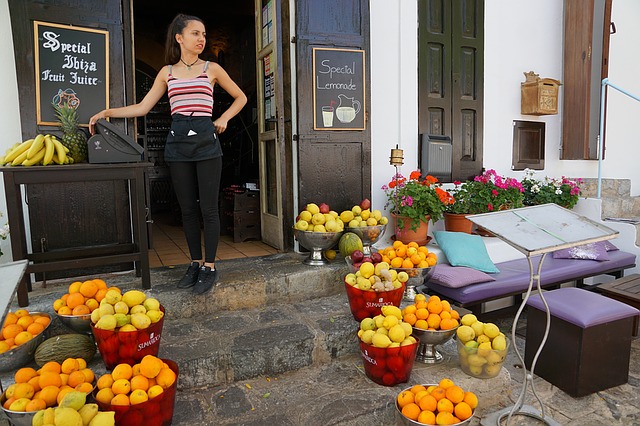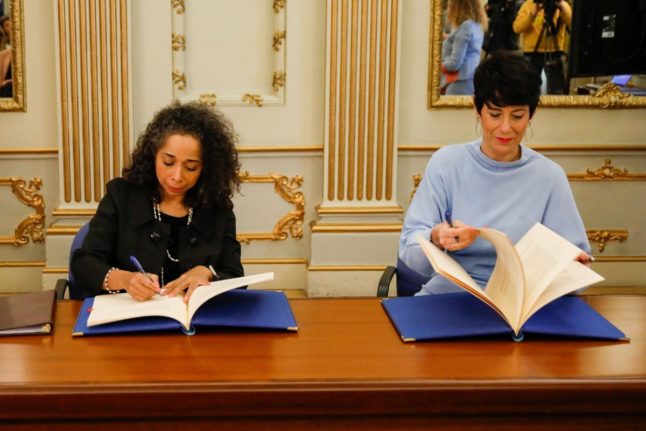The Spanish government first announced its digital improvement programme back in November 2021, but it wasn’t until March 15th 2022 that the specific details of the scheme were revealed.
The ‘Kit Digital’ programme, as it has been called, will run until 2023 with an initial investment of €500 million.
Initially, it was only available to self-employed workers and companies with between 10 and 49 employees, but as of June 22nd 2022, it is now open for those with between 3 and 9 employees as well.
Autónomos (self-employed workers) and small business owners in Spain have had a tough time during the pandemic, whilst also having to pay some of the highest social security contributions in Europe.
The Spanish government’s new ‘digital kit’ is aimed at helping many of these small business owners out by covering the cost of digital improvements, from their websites to social media management and marketing campaigns..
READ ALSO – Self-employed in Spain: What you should know about being ‘autónomo’
How will the ‘Kit Digital’ work?
The Digital Kit funds will be distributed in the form of vouchers of up to €12,000 for small companies and autónomos who want to undertake a digital transformation of their businesses.
These vouchers will then be passed on to ‘digital agents’ – a series of companies authorised by the government to develop these projects, which they call “digital solutions”. That means that self-employed workers and small businesses will not receive the funds directly nor be able to choose which company to hire for the digital improvements.
Instead, it will be the digital agents who receive the final payment and will take care of the paperwork and digital improvements. Currently, there are already more than 3,000 companies authorised as digital agents, although the list is expected to continue to grow in the next few weeks.
Please note that €12,000 in funds is the highest amount and will only be available to businesses with the need for a complete digital overhaul.
What digital improvements are available?
The digital transformation projects which can be financed with the Digital Kit fall into several different categories, which the government defines as:
- The creation of web pages and visibility of the company on the internet (Google rankings, SEO)
- Electronic commerce
- Social media management
- The improvement and digitisation of customer management systems
- Business intelligence and analytics
- Virtual office tools and services
- Digitisation and automation of business processes
- Electronic billing
- Secure communications
- Cybersecurity
Who will be eligible for the Digital Kits?
In order to be eligible for the Digital Kits, you must:
- Be a small business, micro business or autónomo (A small business is considered to be one that has more than 10 employees and no more than 50 and a micro business has less than 10 employees whose annual turnover does not exceed €2 million).
- Meet the financial and cash limits that define the categories of each type of company
- Not be considered a company in crisis
- Be up to date with tax and social security payments
- Not be subject to an outstanding recovery order from the European Commission
When can I apply?
The Asociación de Autónomos (ATA) has confirmed to The Local that small businesses with between 10 and 49 employees are able to apply for the Digital Kits any time up until 11am on September 14th 2022. Meanwhile, those with between 3 and 9 employees are able to apply from June 22nd 2022.
If you want to be in with a chance of receiving one, you should apply as soon as possible, as the aid will be granted on a first-come-first-served basis, depending on your needs and funds are already running out.
ATA also confirmed that micro-businesses with just two employees can apply from September.
How do I apply?
In order to apply, you must register at www.acelerapyme.es and complete the self-diagnosis test. This will allow the government to know what level of digitisation your company has already and what you need.
Remember, those businesses that have already registered will be given priority.
You can also request ATA to help you apply for the kits by filling out the form found at https://autonomoskitdigital.es/.
You can then check the catalogue of digital solutions, where you can choose one or several of those offered by digital agents that best suit the needs of your business.
Next, you will request the Digital Kit aid at the Red.es electronic office (sede.red.gob.es) and complete the associated form.
Once your request for a Digital Kit has been granted, you will be able to access the catalogue of digital agents and decide which one you want to work with, before signing an agreement to start your project.
According to the latest stats available, there are approximately 2.9 million SMEs in Spain (around 70 percent in the services sector), and around 3 million autónomos.
READ ALSO: How to set up an online shop in Spain



 Please whitelist us to continue reading.
Please whitelist us to continue reading.
Member comments